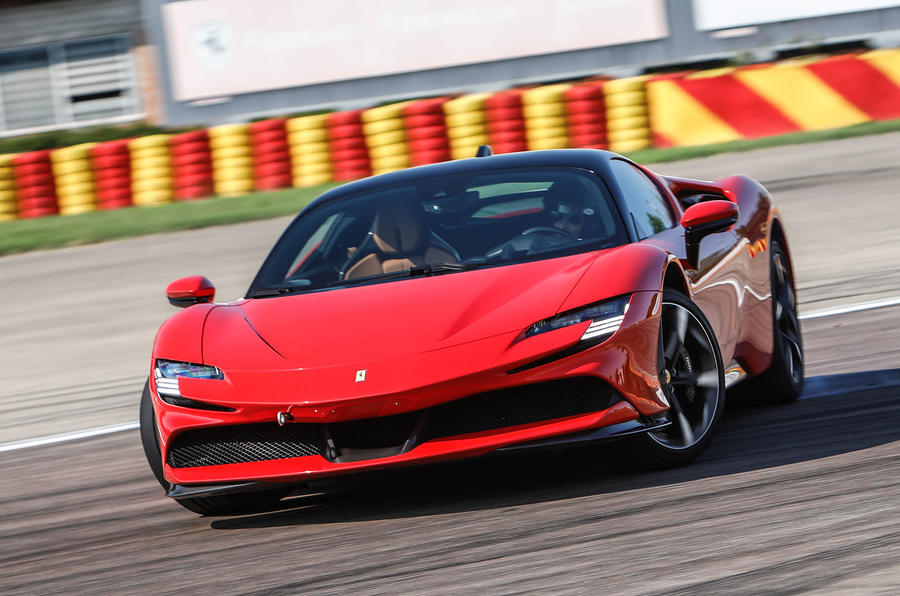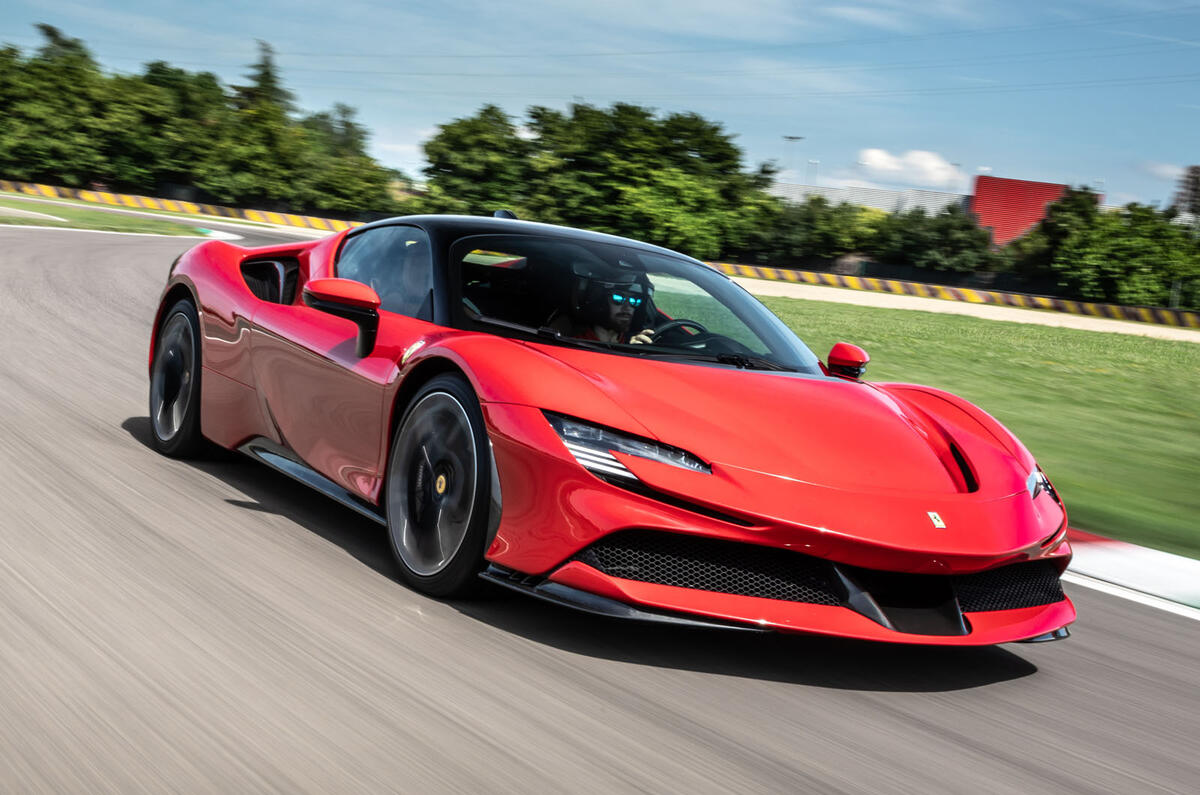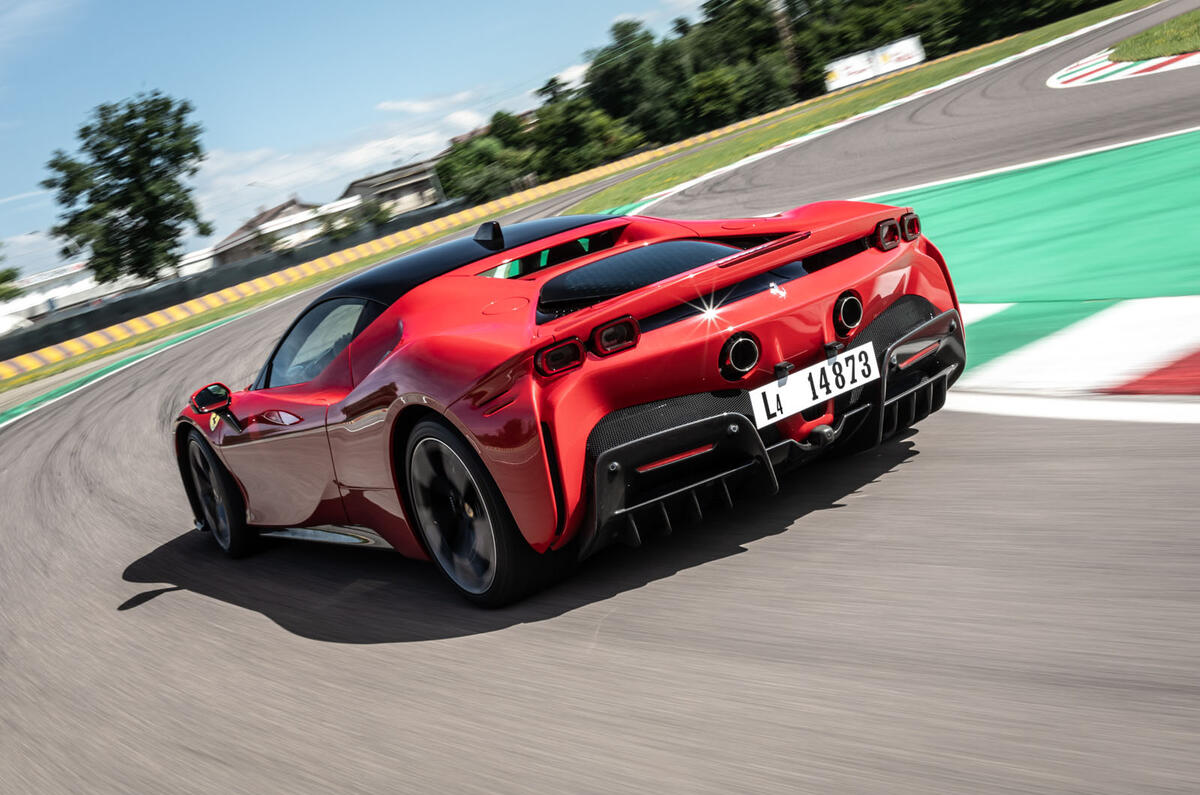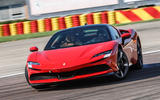What is it?
Much is familiar in Maranello, but more is different.
My day with the SF90 Stradale starts outside the famous entrance to the Ferrari factory but with a group of technicians wearing surgical masks. I’ve got one myself, and my temperature is taken by a thermal camera system. There’s none of the drama normal for a big car launch nor the interaction with executives; the technical presentations were shared by video before I flew out. And ‘my’ SF90 really is mine for the day, with no co-driver and stern warnings that nobody else can enter until it has been thoroughly sanitised. Italy may be bouncing back from Covid-19 and Maranello is back to full production, but no risks are being taken here.
Yet things soon get stranger. Once I’m effectively sealed in the SF90’s cabin, prodding the steering wheel’s engine-start button doesn’t produce the familiar cacophony of noise as the engine bursts into life. The only visible effect is to illuminate the word ‘ready’ under the gearshift indicator on the digital instrument screen.
Pulling back the right-hand shift paddle turns N to D and then, with the tachometer needle still pointing at a resolute zero, I’m pulling away in almost total silence and having the entirely novel experience of what is, briefly, a front-driven Ferrari EV.
When the SF90 was announced as Ferrari’s first plug-in hybrid last year, many supposed that, as with the LaFerrari, the electrical side of the powertrain would play a supporting role, as hushed backing vocals to the operatic turbocharged V8 that provides the bulk (770bhp) of its astonishing 986bhp power output. While that’s true under hard use, the SF90 is a proper plug-in hybrid for urban use, capable of travelling up to 15 miles on flowing electrons alone and always starting in the Hybrid driving mode that defaults to electric power under gentle use. With a short enough commute and charging points at both ends, you could drive it forever while doing nothing more than lugging its V8 around as ballast.
Nobody will, of course – and I don’t for long. Well before leaving Maranello, the novelty of a silent and not especially rapid Ferrari has worn off, and I switch to the Performance mode that fires the engine into life. Pressing the throttle harder in Hybrid would have done the same thing, but there’s also an eDrive mode that won’t start the engine. Ferrari reckons buyers will be happy to travel electrically at low speeds and that the feature will be popular with owners heading out for an early-morning blast without disturbing neighbours.
Ferrari hasn’t just launched its plug-in hybrid first among its rivals; it has also demonstrated its technical ability with an astonishingly complex drivetrain. The engine is most easily dealt with: it’s a development of the F154 V8 from the F8 Tributo but with a redesigned cylinder head, higher injection pressures, a slight capacity increase, new turbochargers and an ultra-compact intake manifold. It’s 25kg lighter than the F8’s engine yet makes 60bhp more.
That’s the easy bit; there’s actually not enough room here to fully describe the intricacies of the electric side of the powertrain. This uses three electric motors: one for each front wheel, working through what’s described as an RAC-e drive mechanism, and the third a cutting-edge ‘axial flux’ motor sandwiched between the V8 and the new eight-speed dual-clutch automatic gearbox.



































































Join the debate
Add your comment
Cold in Italy
-30 deg C in Canada we usually put the heater on
LaFerrari
If this isnt the replacement for the LaFerrari imagine what will be!
Getting paid every month from